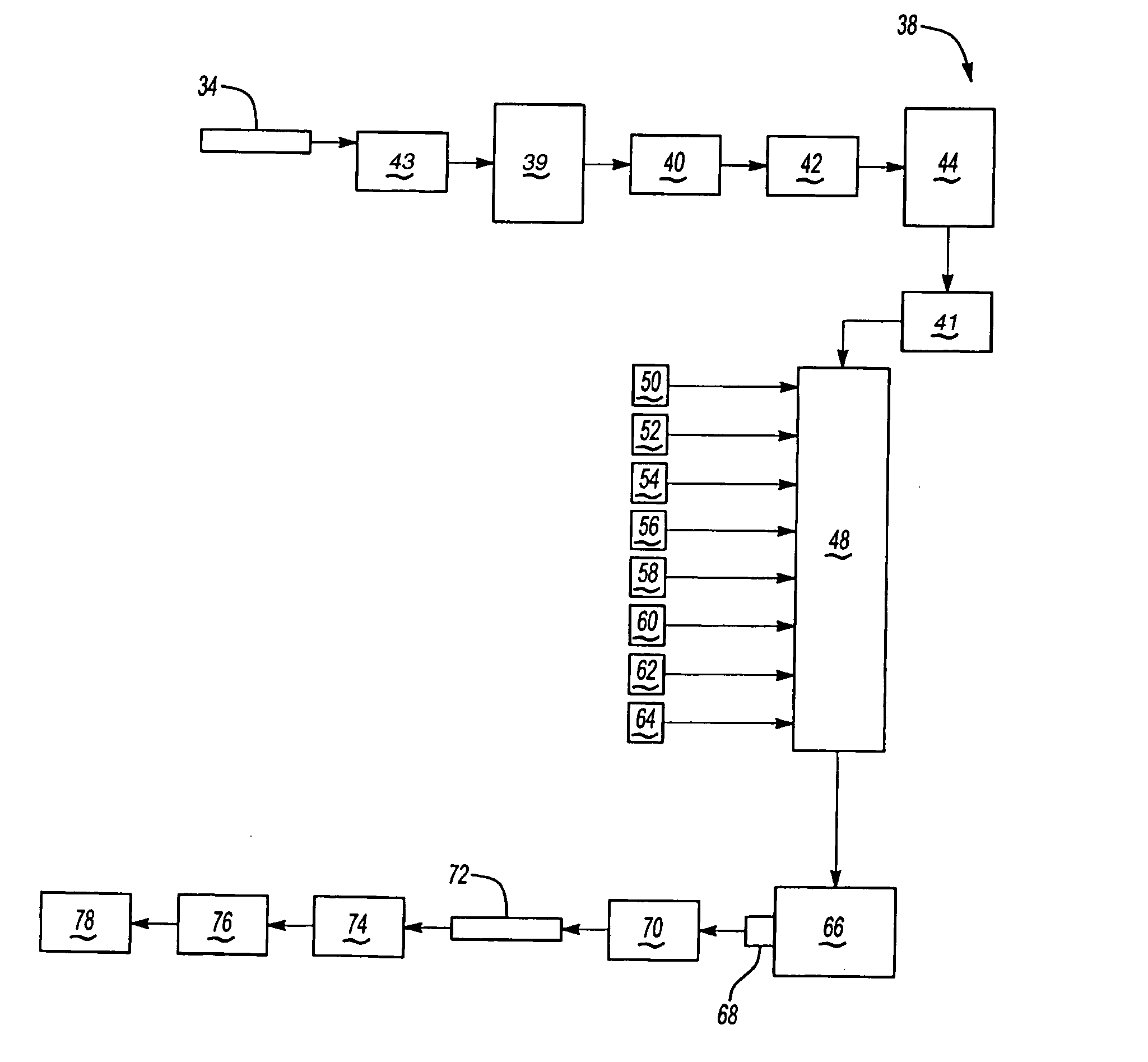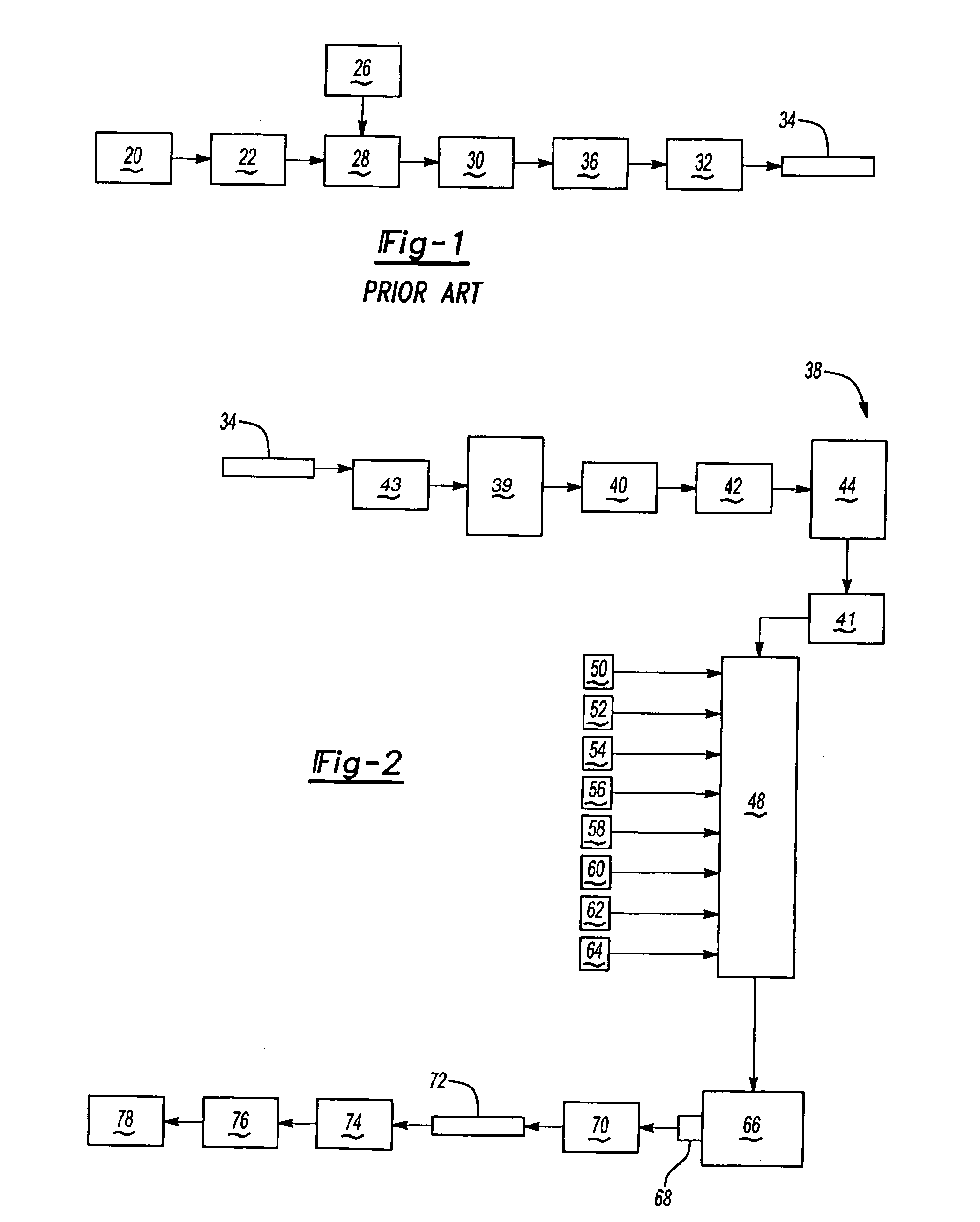Method of manufacturing composite board
a manufacturing method and technology of composite boards, applied in the field of manufacturing composite boards, can solve the problems of increasing the amount of material collected and discarded in landfills, releasing harmful gases into the atmosphere, and reducing so as to reduce the size of waste material particles and reduce the moisture content of waste flour
- Summary
- Abstract
- Description
- Claims
- Application Information
AI Technical Summary
Benefits of technology
Problems solved by technology
Method used
Image
Examples
Embodiment Construction
[0014]FIG. 1 schematically illustrates a prior art method of manufacturing a medium density fiber (MDF) board or particle board 34. Wood 20 is first ground into wood chips of a desired size in a wood reducer 22. After grinding, the wood chips are mixed with liquid urea formaldehyde 26 in a blender 28 to form a uniform mixture. Urea formaldehyde is a thermoset resin. The homogenized mixture is then molded or extruded 30 into a desired shape. The urea formaldehyde cross-links in the mixture, hardening the mixture into a solid board. The board can then be coated 36 with polyvinyl chloride (PVC), melamine, metal, foil, impregnated paper, wood veneer that is stained and sealed, or polyester to make the board 34 decorative and wear resistant and to provide other properties. The board is then cut to a desired shape and size in a sizer 32. The board 34 includes approximately 8-15% urea formaldehyde by weight. The board 34 can be used as cabinets, molding, deck boards, storage units, desks, ...
PUM
| Property | Measurement | Unit |
|---|---|---|
| size | aaaaa | aaaaa |
| weight | aaaaa | aaaaa |
| size | aaaaa | aaaaa |
Abstract
Description
Claims
Application Information
 Login to View More
Login to View More - R&D
- Intellectual Property
- Life Sciences
- Materials
- Tech Scout
- Unparalleled Data Quality
- Higher Quality Content
- 60% Fewer Hallucinations
Browse by: Latest US Patents, China's latest patents, Technical Efficacy Thesaurus, Application Domain, Technology Topic, Popular Technical Reports.
© 2025 PatSnap. All rights reserved.Legal|Privacy policy|Modern Slavery Act Transparency Statement|Sitemap|About US| Contact US: help@patsnap.com


